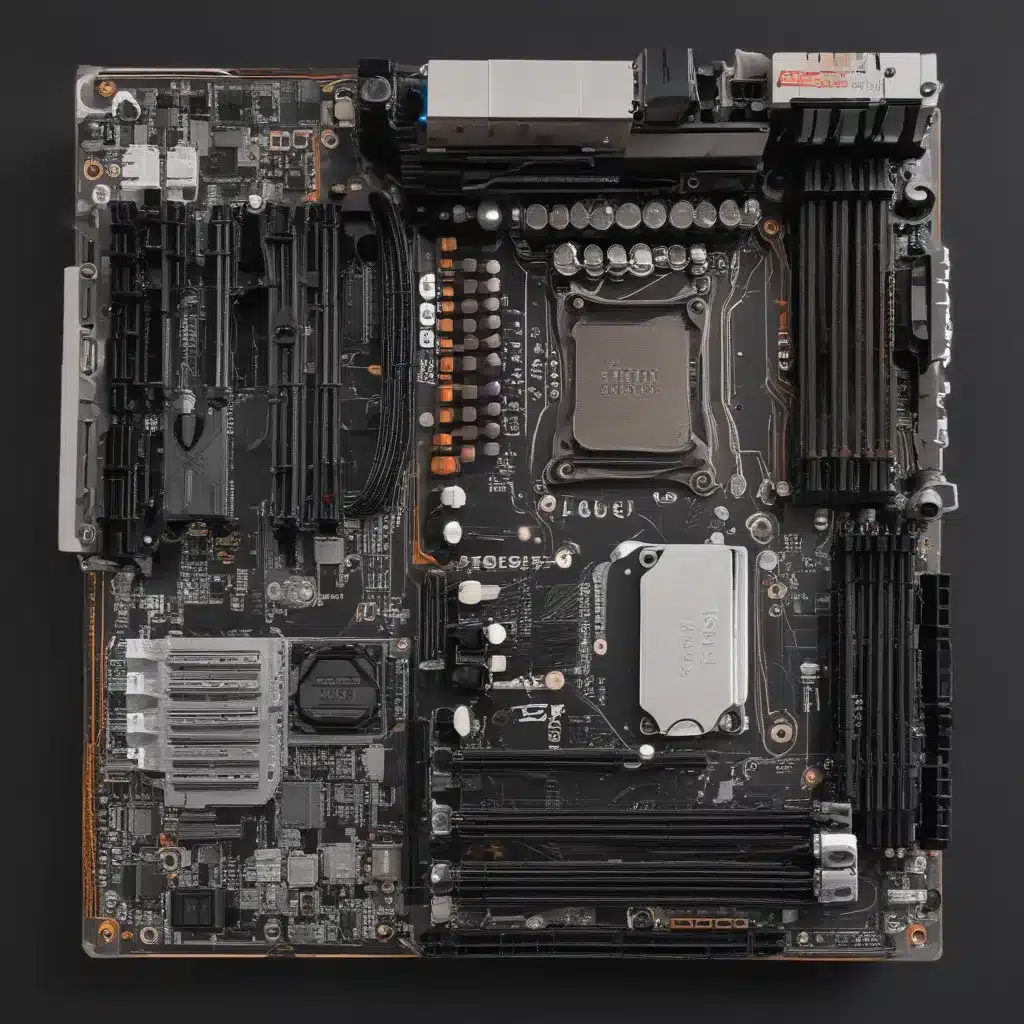As a self-professed tech enthusiast, I’ve always been drawn to the thrilling prospect of building my own high-performance PC. So, when AMD unveiled their latest Ryzen 7000 series, codenamed Zen 4, I knew I had to dive in headfirst. And what better way to do it than to create a beast of a machine that would put my coding, gaming, and content creation skills to the test?
Choosing the AMD AM5 Platform
After carefully considering the options, I decided to go all-in on the new AMD AM5 platform [1]. The decision wasn’t an easy one, as the Intel LGA1700 platform was also tempting. However, AMD’s proven track record of long-term platform support won me over. Plus, the Zen 4 architecture promised some tantalizing improvements over the previous generation [2].
One of the key factors that sealed the deal was the sheer number of new features the AM5 platform brings to the table. From PCIe 5.0 support to the on-die ECC capabilities of DDR5 memory [3], this platform is clearly built with the future in mind. And let’s not forget the whopping 28 PCIe 5.0 lanes on the flagship X670E chipset – plenty of room for expansion and high-speed storage [4].
Selecting the Right Motherboard
With the platform decision made, it was time to choose the perfect motherboard. Now, I’ll admit, this was a bit of a challenge. There are so many options out there, and each one seems to have its own unique selling points. But after much deliberation, I settled on the ASUS Prime X670E-Pro [5].
This board struck the perfect balance between features, performance, and aesthetics. No gaming-focused gimmicks here – just a sleek, minimalist design that would complement the rest of my build beautifully. And with its robust VRM cooling, dual M.2 slots, and high-speed connectivity, I knew it would be more than up to the task.
Powering the Beast
Next up, the heart of the beast – the CPU. After much consideration, I opted for the AMD Ryzen 9 7900X. This 12-core, 24-thread powerhouse has enough muscle to tackle even the most demanding workloads, with a boost clock of up to 5.6GHz [6]. Paired with a beefy Noctua NH-D15 cooler, I knew this CPU would be able to handle anything I threw at it.
Speaking of power, I also had to choose the right PSU for the job. After doing some research, I settled on the EVGA SuperNOVA 650 P6 – an 80 Plus Platinum certified unit that promises high efficiency and rock-solid stability [7]. With a fully modular design and an eco mode, this power supply should keep my system running cool and quiet, even under heavy load.
Memory and Storage: Laying the Foundations
When it came to memory, I didn’t want to take any chances. After scouring the motherboard’s QVL (Qualified Vendor List), I landed on a pair of 32GB Kingston Fury DDR5 sticks [8]. These modules are specifically validated for use with the X670E platform, so I knew they’d play nicely with my new rig.
As for storage, I wanted to future-proof my setup as much as possible. While PCIe 5.0 SSDs are still in their infancy, I couldn’t resist the Samsung 980 Pro – a blazing-fast NVMe drive that should provide ample space and lightning-fast data transfer speeds.
The Crowning Jewel: The Case
Now, no high-end PC build would be complete without a stunning case to house all the components. And that’s where the Fractal Design North caught my eye. This stunning, minimalist chassis features a tempered glass side panel and a sleek white finish that just oozes Scandinavian style [9]. With its excellent airflow and cable management features, I knew this case would be the perfect complement to my new Ryzen 7000 build.
Bringing It All Together
With all the components carefully selected, it was time to put this beast together. I have to admit, the anticipation was palpable as I carefully slotted each component into place, making sure everything was properly seated and secured. And when I finally hit the power button, the system roared to life with a satisfying hum.
As I booted into my freshly installed Arch Linux distribution, I couldn’t help but feel a sense of pride and accomplishment. This wasn’t just any ordinary PC – this was a machine built to conquer the most demanding tasks, from blazing-fast video rendering to immersive gaming sessions. And with the AMD Ryzen 7000 platform at its core, I know this rig will continue to impress for years to come.
So, there you have it – my journey to building the ultimate Ryzen 7000 Zen 4 PC. It was a labor of love, to be sure, but the end result is a machine that I can’t wait to put through its paces. Who knows what the future holds, but one thing’s for certain: with this powerhouse at my fingertips, I’m ready to take on whatever challenges come my way.
References:
[1] https://forum.corona-renderer.com/index.php?topic=38446.0
[2] https://www.reddit.com/r/Amd/comments/117zdot/is_it_really_worth_going_with_am5_at_the_moment/
[3] https://www.paolomainardi.com/posts/linux-workstation-build/
[4] https://www.reddit.com/r/Amd/comments/ya3gxx/psa_dont_buy_an_asus_motherboard_for_ryzen_7000/
[5] https://forums.tomshardware.com/threads/please-review-my-high-end-pc-build.3803333/
[6] https://www.fredmiranda.com/forum/topic/1832370
[7] https://www.asus.com/microsite/motherboard/AMD-AM5-X670-B650
[8] https://extremehw.net/topic/2575-ryzen-7000-zen-4-owners-club/page/2/
[9] https://www.fractal-design.com/products/cases/north/north/chalk-white/













